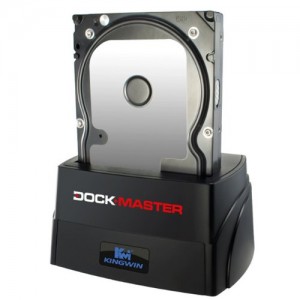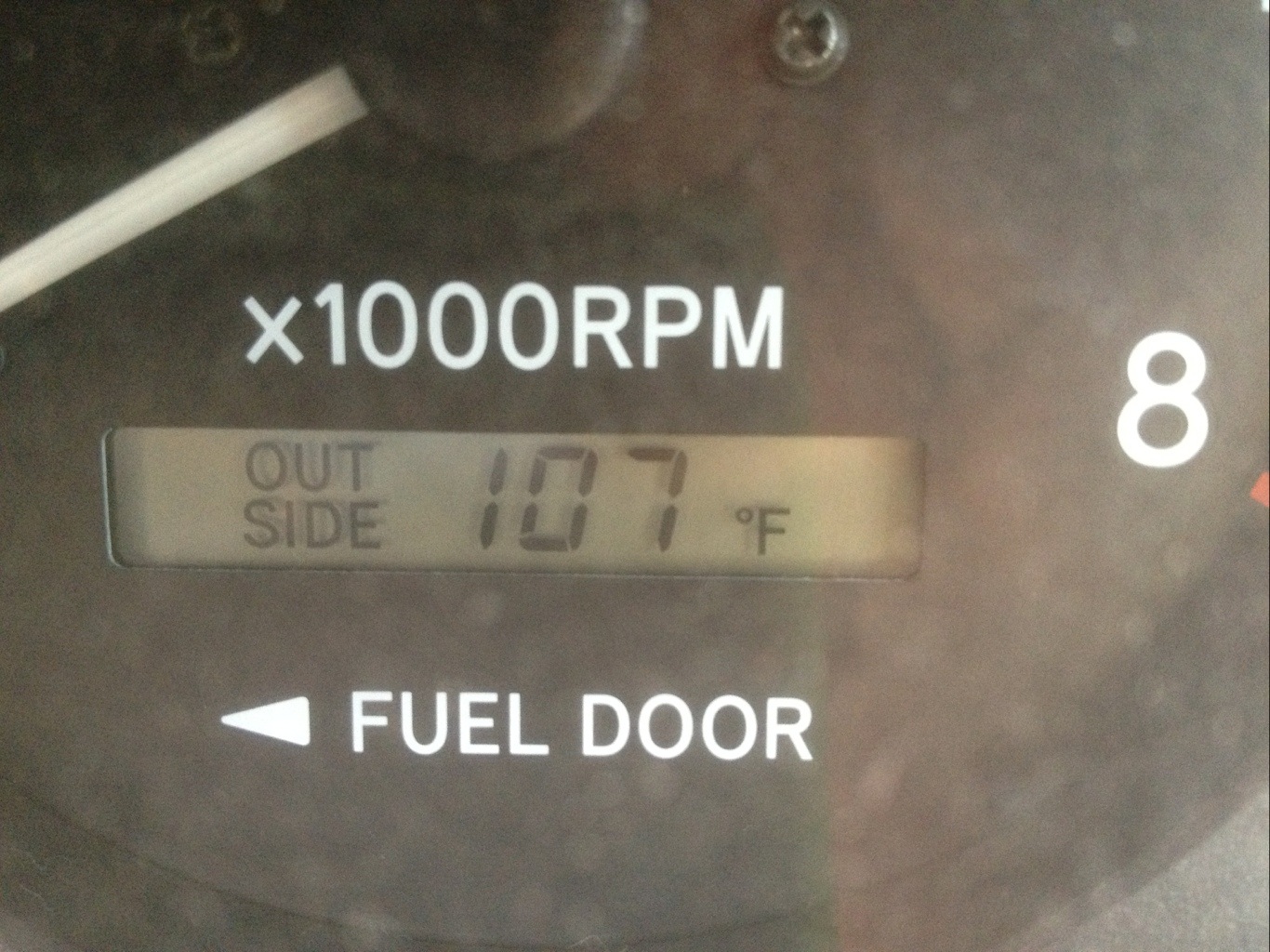It was 109° while I was driving
The Real Health Care Questions
Health care in America is a huge topic right now. There are many opinions, but most people fall very squarely on one of two sides: either the government gets heavily involved, or it doesn’t. I suspect very few people know the full details about any of the legislation that’s in play. I know I certainly haven’t read any of the official documents. Most people are emotionally attached to one belief or another, almost universally along our two-party lines. There’s a lot of misinformation and propaganda all over the place, with people saying they’re against this or that, or for it, without really knowing what that really means.
I’m not an expert in this either. I’m not writing this to set anyone straight or convince anyone that this or that is the One Right Path. Instead, what I see is that few people really think through what health care encompasses, and what some of these social decisions really mean.
I’m asking questions that I think everyone should ask themselves. Think about them. Decide what you really think about these things. Then go look at the legislation regardless of the party that backs it and see how it aligns with what your answers are. When I personally do this I find that there really isn’t any complete health care answer, nor does there even seem to even be a good one. I believe this is because there’s too much fighting over meaningless political sides, and not enough thought being given to how we might really answer these questions.
It all comes down to cost. That’s not going to get any better. It’s surely only going to get worse. We humans seem to be extremely good at coming up with miraculous ways to deal with health issues, and those solutions continually get more expensive and more complex. Insurance costs are not really the issue. Even if we eliminated insurance completely, medical costs will still continue to go up. We live long lives, and they’re getting longer. We are getting better and better at understanding diseases and coming up with complex (expensive) treatments. Health care is a growing money sink.
There’s one main question that drives everything: Who should have access to the health care they need?
It’s a tricky question. There is a vast difference in cost for different ailments. A simple nasal infection costs much less to treat than a heart transplant.
Everyone should get all the health care they need.
How do we pay for that? Saying “taxes” is not really a valid answer. It’s too abstract. If you really mean, “Each person in the country should put a percentage of their income into a pot to pay for it”, then say that. What percentage? A fixed amount? How much? Does everyone pay into the pot? What about the people who don’t have money for the pot? What if someone decides they don’t want to put money in the pot? Keep in mind that this will be extremely expensive if you are going to pay for all health care. Charity donations are not going to come close to covering the costs. It’s going to be a crapload of money, and the costs are just going to keep going up. If it cost 50% of your income to ensure that everyone could be treated for every ailment, would you want to pay it? How about 80%? 95%? Don’t try to say “it’ll never cost that much.” If you go down this path there is conceivably no end in sight. We’ll keep inventing amazing machines and drugs that prolong life, or cure the rarest of diseases, or test for as yet unknown problems—all at increasingly great expense. We already have the means to keep some people alive in an incapacitated state for long periods of time, but at great expense. If that’s what they or their family wants, then it’s got to be paid for if all health care is available. Maybe everyone having all their health needs met is what you feel is morally correct. If so, you have to remember there is no magic available to pay for it and it’s going to be increasingly very, very costly. Be sure you are willing to personally pay that price.
People should simply get the health care they can personally afford.
Very few people can afford any possible treatment they might possibly need at some point in their life. A denial of health care because of a personal lack of means leads to a large percentage of our population living in misery with medical problems they can’t afford to fix, with many of them dying due to those medical problems. Charity doesn’t even come close to covering the gap, so it’s not fair to fall back on that. If you are 100% against spending even a penny on other people’s health care needs, then you need to be honest and say that you don’t morally have a problem letting people suffer and die that you could potentially help. This is not a new idea: this is the way things are today to some degree. Many people die because they can’t pay for the necessary transplant, or live in misery because they can’t afford the drugs that would help them. Charity doesn’t cover all needs, and as costs continue to rise they will cover even less. If we cut off all government aid right now (Medicaid and Medicare, for example), there would be much misery and death among many Americans. If you believe in “everyone helps themselves,” then remember that applies to you and your family also.
We all pay some into a pot to help with some amount of health care costs.
(I suspect this is where most people fall, it’s just a question of how big the pots should be, and who manages the pots.) We do this today with Medicare and Medicaid, as well as with our private insurance programs. It’s an inefficient system, we don’t come close to covering all the health care needs of everyone, and not everyone even has access to one of these pots. But many do get at least a portion of health care that they couldn’t afford on their own. So to think about this path, throw out today’s system and just think of it as, “I pay some percentage of money toward general health care”. If this is completely repugnant to you, then make sure you are okay with the discussion in the previous paragraph. Having a pot of limited money causes us to have to answer many very hard questions. Who doesn’t get health care when they need it? Do we simply let the person who needs an artificial heart die because we can’t give him that big a portion of the pot? Do we tell the 4-year-old who needs $60,000 worth of treatment every year to stay alive that life is rough, but there’s not enough in the pot for you? How should that pot should be divided? Remember, it will not cover all needs, period. It probably won’t even cover most needs. People will need to be denied things. You don’t get to say charity will cover the excess, because they won’t and don’t. There’s nowhere near enough charity to pay for all the health care that people can’t afford. Charity is also not magic money, it comes out of someone’s pocket, so we can consider it to be one of these pots. Do you get to decide how much to put into the pot, and how does that affect your health care coverage? Should everyone be forced to pay into a pot to begin with? What if they choose not to? Do we let them suffer and die with no health care if it comes to that? There will also certainly be people who can’t afford to put anything into a pot. Do those people automatically become attached to a pot others paid into? (Otherwise we are back in the previous paragraph.) So how do we decide when someone gets denied health care? Should it be based on their contribution to a pot? Should a committee come up with a big document that tries to cover all possible outcomes? Should ruling bodies be formed to rule on each question as it comes up, much like our court system? (Note that these decisions are being made today by insurance companies, including Medicaid and Medicare.) Do not fool yourself into the happy world of everyone getting treated for everything. That’s the limitless money option we covered a couple of paragraphs above.
We each pick our pot and keep the government out of it.
If you say, “People can buy insurance if they want it, but I don’t want to pay any taxes to pay for other’s health care,” then you are really in the “People should simply get the health care they can personally afford” camp. Many people can’t afford to throw money into a pot. You might say your real problem is with giving a pot of money for general health care to the government to manage. If you want to privatize it you’re back to paying into your own pot (insurance) and many people can’t be (aren’t) in that club. We have Medicaid and Medicare now, and they aren’t sufficient to keep everyone in good health. Do you think a different government pot is going to work better? You should figure out how it’s going to match the answers you gave to the questions above. If you’re okay with the current system, then you’re basically answering with a combination of “people should get the health care they can afford” plus “I’ll let someone else decide who doesn’t get access to this big pot I’m paying into with taxes.” Take government management out of the picture, it’s secondary to deciding how you really feel about health care costs as discussed above. Answer the questions. Decide what you’re really comfortable with. Then we as a country can have real discussions about how to meet those needs, and how much or how little the government should be involved, and in what way.
A Quick Kauffman Performing Arts Center Overview
Today I went to see the Kansas City Symphony “side-by-side” with the Youth Symphony of Kansas City, my first visit to the new Kauffman Performing Arts Center. Despite my 15-year-old sleeping through 3/4 of the performance, it was nice.
Parking is very conveniently plentiful in a garage below the Center, but it will cost you $7. You can get inside the Center through interior corridors, or go upstairs and walk across the green space, which is what we did. The view from there:

Once inside, everything seems very, very white.

It looks like there really aren’t any bad seats in the house, except, ironically, the one my son was sitting in. His view was slightly blocked by the little fence some lawyers surely had put in at the bottom of the balcony stairs. For reference, this picture was taken from the right mezzanine, row BB, seat 601.

All panoramas taken on my iPhone 4S and stitched together using AutoStitch Panorama.
A Paranoid’s Guide To Backing Up
Backup. Backup. Backup.
We hear it all the time, and some of us actually do it. Some of us do it to the extreme. And you know what? I’m okay with that.
Here’s my process. It’s built around a Mac ecosystem, but the ideas are applicable to others, with different applications filling the roles. It might seem extreme, or paranoid. We’ll revisit that when you eventually lose some precious photos of your kids or that document you just worked 23 hours to perfect.

Time Machine
For Macs, using Time Machine is a no-brainer. You plug in a bare drive and it’s hard not to use it for backup. Time Machine copies everything from your internal drive to your Time Machine drive. Once an hour it copies all the latest changes. It’s simple and you don’t have to mess with it, a hallmark of any backup solution. If you have to restore your computer at some point, the Mac OS install process can copy your files from the Time Machine disk so that you shouldn’t lose more than an hour’s worth of work. Further, you can use Time Machine to pull off previous versions of any file; the version from an hour ago, a week ago, a month ago, etc. Very handy at times.
SuperDuper

That’s pretty good, but the Paranoid Backup-er takes it further. You can’t boot from a Time Machine backup. So if your internal drive crashes and burns you have to go through a lengthy install process to get everything back to normal from your Time Machine drive. I personally want the ability to take my backup drive, plug it in, and keep going with as little downtime as possible. This is called “booting from a clone”. To get this ability I run a scheduled nightly backup (to a drive separate from my Time Machine drive) using SuperDuper. Every night an exact copy of my drive is made. It only takes a few minutes because only the things that changed that day have to be updated on the backup drive. Now if my internal drive fails I can simply boot off the SuperDuper backup and I’m back in business. If I have things set up so the SuperDuper backup is the same physical size as my internal drive, in many cases I can simply install the SuperDuper drive into my computer and I’m done (other than using Time Machine or Dropbox to get back the day’s work missing from the last nightly SuperDuper backup).
Dropbox

So what about immediate changes? SuperDuper only backs up once a day. Time Machine only backs up once an hour. Can we do better than that? Yes, and for this purpose I use Dropbox. Dropbox is designed for syncing files between computers. It syncs changes nearly immediately and does a pretty good job of it. And the best part is that they’ll give you at least a 2GB allowance for file syncing for free. (There are various ways to increase the free storage—mine has been bumped up to 7GB.) For my purposes I only use Dropbox for my non-media documents. So any document that’s not a picture, video, or music file is handled by Dropbox. Perhaps surprisingly, the total storage needed for these files is not very much and easily fits in the 2GB free allocation. If I create a spreadsheet, for example, I do it in a folder synced by Dropbox and the file ends up on all my other computers and on Dropbox’s servers (accessible via any Internet browser), with the most recent changes available everywhere nearly immediately. It’s terrific, especially if the free version covers your needs.
Offsite drives
Okay, so at this point I have everything backed up to at least 2 places. But what I don’t have is anything (outside of Dropbox) backed up anywhere outside of my house. A fire or theft would be devastating, or perhaps a particularly nasty computer virus that wipes out all attached drives. I can’t bear the thought of losing my precious, irreplaceable photos or videos. Thankfully, this is a pretty easy thing to manage if you’re using something like SuperDuper. Once a week I take my SuperDuper drives to work and swap them out for their clones that I store there. To make this process as easy as possible I make the drives true clones by setting their system drive IDs to identical values. Now with the worst case scenario I’ve lost no more than a week of material, and probably much less than that due to Dropbox.
Network backup

Now for the truly paranoid who have sufficient bandwidth on their Internet connection, there’s one more step that can be taken: Internet backup. For some this may not be a viable solution, but you’re probably just fine with all the stuff I already talked about. I’ve found that for Internet backup, Crashplan works well, at a decent price. It has two features that I love: unlimited backup and backup of external drives. It takes a while for the initial upload — like weeks or even months — even with a fast Internet connection. (They have an option to send you a hard drive to skip the massive initial upload over the Internet, but it’s kind of a pricy option.) Once you’ve got your initial backup set done, you probably won’t notice Crashplan working in the background after that. I use it almost exclusively for media — videos, photos, and music — with a sprinkling of a few other things here or there. A restore off the internet could take a while. That’s not really the point. For me, this is the last ditch option if everything else goes to hell. I expect I’ll never pull a file back down, but I take comfort in knowing it’s there. Paranoia can use all the comfort it can get.
Hardware
I suspect there’s still a question you’re asking. It’s probably, “Jeepers, Steve, have you ever actually lost any data?” No, I haven’t, but that’s not the question I was hoping for. Instead I was thinking you might ask, “Jeepers, Steve, doesn’t this take a boatload of drives?” Well, yes. But drives are (relatively) cheap and my paranoia about losing something is great.
In our house I have one computer, a Mac Mini, that is always running and acts as the house server. Hooked to it is one big drive that supports Time Machine for two household computers. Each of the computers also individually has a drive hooked up similar in size to the internal boot drive, which is used for SuperDuper. So if you’re keeping count, that’s n + 1 drives, where n is the number of computers. Except since I keep offsite SuperDuper clones, it’s actually 2n + 1.
Further, we have one very large drive that we use primarily for media. As of now, I have no problem keeping all our movies, music, and photographs on one big drive. This is true even though I’ve started ripping some of our DVDs and Blu-Ray discs. Since this drive is used as an archive, I don’t feel the need to use Time Machine with it for versioning and hourly backups. I use SuperDuper to clone it nightly, plus that content is primarily what gets backed up by Crashplan. So now we’re at 2n + 1 + 2 backup drives, which in our case equals 7 backup drives.
7 drives, just for backup. Seem excessive? I don’t think so. I feel very, very secure about not losing data. I will never have to look my wife in the eye after her hard drive crashes and say, “I’m sorry,I think it’s all gone.” That peace of mind is well worth it.
So, 7 drives, but 3 are always rotated weekly into offsite storage in a drawer where I work. That leave 3 drives hooked to the Mac Mini and 1 drive hooked to my wife’s computer. I don’t think that’s so bad. Another nice aspect of this is that USB drives are plenty fast enough for this purpose. SuperDuper does all its work at night, so a USB connection works fine. The Time Machine drive might benefit from something faster, but frankly I’ve never had a problem with it over USB. Someday maybe Apple will support USB3 and that will really solve the problem of fast connections to cheap storage.
I recently thought long and hard about some kind of fault-tolerant multi-drive system like a Drobo. I came to the conclusion that it was costly, overkill, and hard to back up. It’s overkill because I already have an extremely fault tolerant system with everything I’ve outlined above. If any drive dies, I have multiple places where that data has been replicated. And I say a Drobo would be hard to back up, while others would say it doesn’t need backing up because it’s fault tolerant. Fault tolerant doesn’t help if your house burns down, or a virus wipes out your system. I still couldn’t sleep unless I had a clone of that data somewhere, and it would have to be offsite for real security. Now I would be looking at buying 2 or 3 Drobos plus the drives to put in them, and that cost is a tremendous jump over basic big drives. My conclusion is that a Drobo-like system is pointless for backup. (There are other reasons you might want a Drobo, but I’m not going to get into that here. I don’t think basic backup or archive storage is a good reason.) Even if my media storage needs grew to the point where a single big drive couldn’t handle it, I’d still just get another set of big drives and split things between them. Even so, it would be cheaper and safer than a Drobo-like system.
I use a basic external drive for Time Machine. I like the Seagate GoFlex Drives because the interface can be changed (for a price) to support USB3, FireWire, or even Thunderbolt. For my SuperDuper drives I’ve been very happy using a drive dock:

I buy cheap, bare drives with no enclosure and simply slip them into the dock. Once a week when I swap them with the offsite drive I pop out the current and pop in the replacement. Very fast, very easy. Anything encouraging ease of use for backups is worthwhile. I transport the offsite drives in drive cases like this one:

Conclusion
This may all seem excessive, but I don’t think it is. Losing data is a big deal. Maintaining thorough backups once the backup sytem is in place is also extremely easy. That’s important for anyone to ensure backups continue, but especially for someone like me who has precious little time to mess with anything. (This blog post, for example, was written in many 10-minute snatches today while dealing with kids and other family needs.) When — not if — a drive fails, I want to deal with it as efficiently as possible and keep everyone happy. This system I have in place allows that and virtually guarantees I will never lose data. I win.


